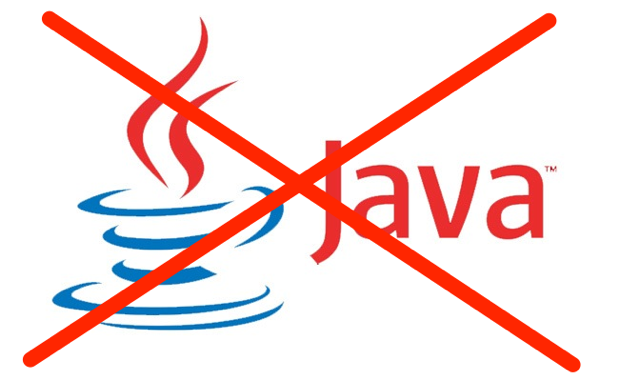Cloud Native Apps
with Spring Cloud

Spencer Gibb
twitter: @spencerbgibb
email: sgibb@pivotal.io
 |
 |
 |
 |
 |
 |
 |
 |
 |
Spring Cloud OSS Team
| Spencer Gibb | @spencerbgibb | OSS |
| Dave Syer | @david_syer | OSS |
| Adrian Cole | @adrianfcole | OSS |
| Marcin Grzejszczak | @MGrzejszczak | OSS |
Spring Cloud Commercial Team
| Matt Stine | Scott Frederick | Roy Clarkson |
| Mike Heath | Vinicius Carvalho | Chris Schaefer |
| Craig Walls | Ben Klein | Will Tran |
| Andy Clement | Mike Gehard |
Cloud Native
- Distributed
- Automated
- Organizational
- Anti-fragile
- Replaceable
I like 'cloud native' better than microservice. I think its more descriptive and doesn't have the awkwardness of having 'micro" in the name.
Cloud Native with Spring Boot
It needs to be super easy to implement and update a service:
@RestController
class ThisWillActuallyRun {
@RequestMapping("/")
String home() {
Hello World!
}
}
Example Distributed System: Minified
No Man (Microservice) is an Island
It's excellent to be able to implement a microservice really easily (Spring Boot), but building a system that way surfaces "non-functional" requirements that you otherwise didn't have.
There are laws of physics that make some problems unsolvable (consistency, latency), but brittleness and manageability can be addressed with generic, boiler plate patterns.
Emergent features of cloud native systems
Coordination of distributed systems
leads to boiler plate patterns
- Distributed/versioned configuration
- Service registration and discovery
- Routing
- Service-to-service calls
- Load balancing
- Circuit Breaker
- Asynchronous / Reactive
- Distributed messaging
Example: Coordination Boiler Plate
Netflix OSS
- Eureka
- Hystrix & Turbine
- Ribbon
- Feign
- Zuul
Archaius
Curator
- Asgaard
- ...
Netflix Uses Spring
- http://spinnaker.io/ - Continuous Deployment tool
- http://www.infoq.com/presentations/spring-cloud-netflix
Example: Spring Cloud and Netflix
Configuration Server
- Pluggable source
- Git implementation
- Per service repos
- Versioned
- Rollback-able
- Encryption
- Configuration client
auto-configured via starter
Discovery: Eureka

- Service Registration Server
- Highly Available
- In AWS terms, multi Availability
Zone and Region aware
Client Side Load-balancing: Ribbon

- Client side load balancer
- Pluggable
- Round robin, random,
weighted response time RestTemplateintegration
http://techblog.netflix.com/2013/01/announcing-ribbon-tying-netflix-mid.html
Feign: declarative rest clients
- Write an interface (similar to Spring Data Repositories)
- Ribbon Integration
@EnableFeignClients
Feign: declarative rest clients
@FeignClient(name = "stores")
public interface StoreClient {
@RequestMapping(method = GET, value = "/simple/stores")
List<Map<String, ?>> getStores();
@RequestMapping(method = GET, value = "/stores/{storeId}")
Store getStore(@PathVariable("storeId") String storeId,
@RequestParam("myparam") String myparam);
}
Circuit Breaker: Hystrix

- latency and fault tolerance
- isolates access to other services
- stops cascading failures
- enables resilience
- circuit breaker pattern
- dashboard
Hystrix
Hystrix Fallback
Circuit Breaker Metrics
- Via actuator
/metrics - Server side event stream
/hystrix.stream- also via rabbitmq
- Dashboard app via
@EnableHystrixDashboard
Rx Java

- Reactive: push vs. pull
- Functional
- Composable
- Return
Observablefrom
Spring MVCController - API Gateway combining services
Rx Java Example
public static void hello(String... names) {
Observable.from(names).subscribe(s -> {
System.out.println("Hello " + s + "!");
});
}
Sample functions:
- map
- flatMap
- zip
- take
- merge
- 350+ operators!
Routing: Zuul

- JVM based router and filter
- Similar routing role as httpd,
nginx, or CF go router - Fully programmable rules and filters
- Groovy
- Java
- any JVM language
http://techblog.netflix.com/2013/06/announcing-zuul-edge-service-in-cloud.html
How Netflix uses Zuul
- Authentication
- Insights
- Stress Testing
- Canary Testing
- Dynamic Routing
- Service Migration
- Load Shedding
- Security
- Static Response handling
- Active/Active traffic management
Spring Cloud Security
Enable Single Sign On (SSO) with an OAuth2 provider declared in external properties.
@EnableOAuth2Sso
Enable security using OAuth2 access tokens
@EnableResourceServer
https://spring.io/guides/tutorials/spring-security-and-angular-js/
Spring Cloud Bus
- Distributed actuator
/bus/envand/bus/refreshactuator endpoints- uses Spring Cloud Stream
Spring Cloud Stream (Brixton)
- Message Driven Services
- Broker is abstracted by
Binder - uses Spring Messaging and Spring Integration
- Binders for rabbitmq, redis or kafka
@SpringBootApplication
@EnableBinding(Sink.class)
@MessageEndpoint
public class CounterApplication {
@ServiceActivator(inputChannel = Sink.INPUT)
@Transactional
public void accept(Vote vote) {
logger.info("Received: " + vote);
}
}
Spring Cloud Sleuth (Brixton)

- Distributed Tracing
(latency analysis) - Instrumented Spring
Libraries (auto-configured) - Open Zipkin Integration
No soup for you!

Spring Cloud Sidecar

- For you non-java apps
- Modeled after Netflix Prana
- Built in zuul proxy
http://techblog.netflix.com/2014/11/prana-sidecar-for-your-netflix-paas.html
Spring Cloud Brixton
Milestones:
- Spring Cloud Consul: Config, Discovery, Bus, Leader Election, Locks
- Spring Cloud Zookeeper: Config, Discovery, Locks, Leader Election
- Spring Cloud Sleuth distributed tracing
Previews, experiments or ideas (ie: no guarantees!)
- Spring Cloud Etcd: Config, Discovery, Locks, Leader Election
Utah Spring Users Group
Utah Spring Users Group is where you can learn more about Spring, Spring Boot, and more Spring Projects. We support the Spring community along the Wasatch Front.
- http://www.meetup.com/utahspring/
- @utahspring
- http://utahspring.github.io/
- First meeting: Thursday, February 11, 2016
Links
- https://github.com/spring-cloud
- https://github.com/spring-cloud-samples
- http://spencer.gibb.us/preso/cloud-native-ujug.html
- Twitter: @spencerbgibb
- Email: sgibb@pivotal.io
Notes
- https://speakerdeck.com/mstine/architecting-for-continuous-delivery-microservices-with-pivotal-cf-and-spring-cloud
- http://www.slideshare.net/ewolff/micro-services-small-is-beautiful
- http://martinfowler.com/articles/microservices.html
- http://davidmorgantini.blogspot.com/2013/08/micro-services-what-are-micro-services.html
Notes cont.
Spring Restdocs
- Programatically generated snippets from unit tests!
- Hand write asciidoc docs including generated snippets
[source,http]
----
HTTP/1.1 200 OK
Content-Type: application/hal+json
{
"_links" : {
"users" : {
"href" : "http://localhost:11070/users{?page,size,sort}",
"templated" : true
},
"profile" : {
"href" : "http://localhost:11070/alps"
}
}
}
----
Spring Session
- Generic vendor session abstraction
- Can be used in any environment, not just web
@EnableRedisHttpSession
Continuous Delivery
- Microservices lend themselves to continuous delivery.
- You actually need continuous delivery to extract maximum value.
- New: ALM support in Cloudfoundry from Cloudbees
Cloudfoundry
- Environment Provisioning
- On-Demand/Automatic Scaling
- Failover/Resilience
- Routing/Front-end Load Balancing
- Monitoring
Deploying services needs to be simple and reproducible
$ cf push app.groovy
and you don't get much more convenient than that.
(Same argument for other PaaS solutions)
Micro vs Monolithic... is NOT new
From: kt4@prism.gatech.EDU (Ken Thompson)
Subject: Re: LINUX is obsolete
Date: 3 Feb 92 23:07:54 GMT
Organization: Georgia Institute of Technology
I would generally agree that microkernels are probably the wave
of the future. However, it is in my opinion easier to implement
a monolithic kernel. It is also easier for it to turn into a
mess in a hurry as it is modified.
Regards, Ken
What's wrong with a monolith?









